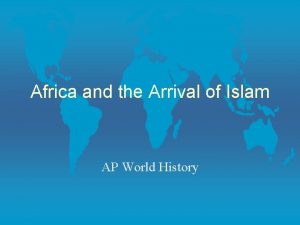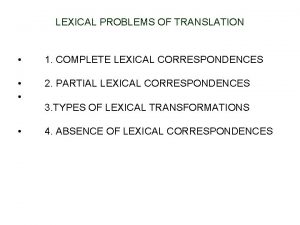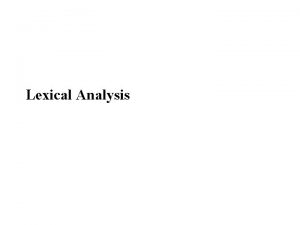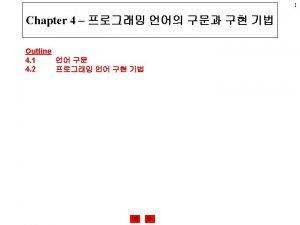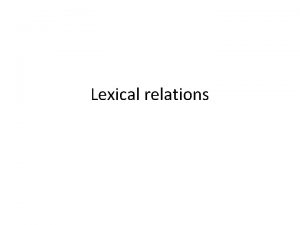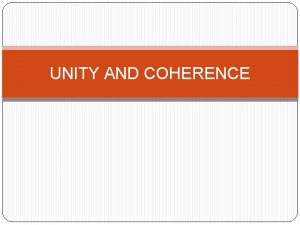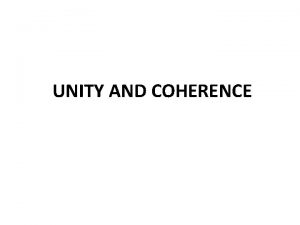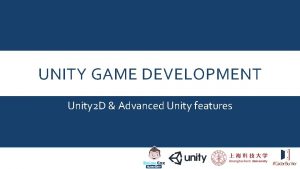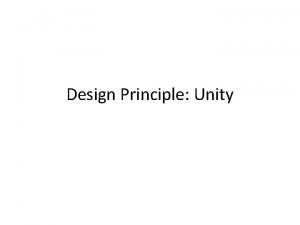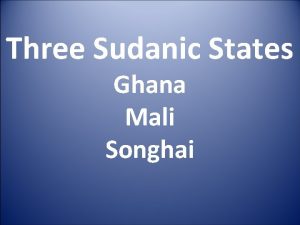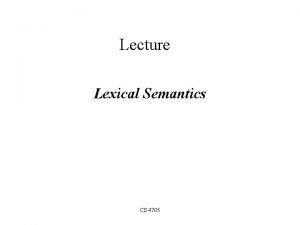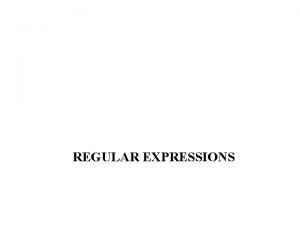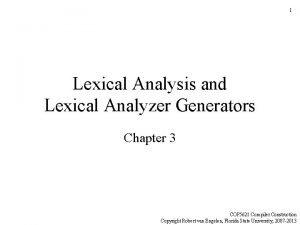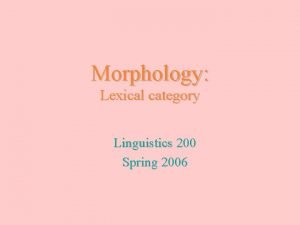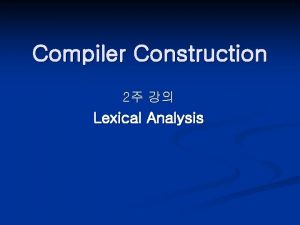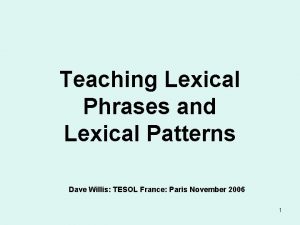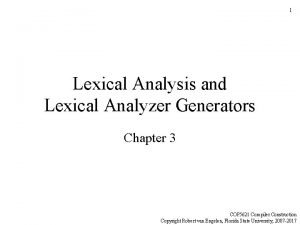Evaluating the genetic unity of Central Sudanic lexical



![[CSD] = 5 (6? ) groups [SBB] Sara-Bongo-Bagirmi: Modo, Baka, Bongo, Yulu, Gula [CSD] = 5 (6? ) groups [SBB] Sara-Bongo-Bagirmi: Modo, Baka, Bongo, Yulu, Gula](https://slidetodoc.com/presentation_image/2bcd234074f0bbc578f90e3504ddde07/image-4.jpg)




























![Verbal intensive t [SBB] Gula (Nougayrol 1999: 116 -117) àvà sauter távå (GS) Verbal intensive t [SBB] Gula (Nougayrol 1999: 116 -117) àvà sauter távå (GS)](https://slidetodoc.com/presentation_image/2bcd234074f0bbc578f90e3504ddde07/image-33.jpg)
![Deverbative K- [SBB] Bagiro k-`/kì- > infinitives, and nouns/adjectives (Boyeldieu 2000: 126 -129) Deverbative K- [SBB] Bagiro k-`/kì- > infinitives, and nouns/adjectives (Boyeldieu 2000: 126 -129)](https://slidetodoc.com/presentation_image/2bcd234074f0bbc578f90e3504ddde07/image-34.jpg)
![O-/E- or A-/E-: a. Itive/Ventive and b. Neuter/Causative [SBB] ? ? ? [MMD]: O-/E- or A-/E-: a. Itive/Ventive and b. Neuter/Causative [SBB] ? ? ? [MMD]:](https://slidetodoc.com/presentation_image/2bcd234074f0bbc578f90e3504ddde07/image-35.jpg)



- Slides: 38

Evaluating the genetic unity of Central Sudanic: lexical and morphological evidence Pascal Boyeldieu (CNRS, Llacan-UMR 8135)

Summary 1. Central Sudanic: history and overview 2. Sara-Bongo-Bagirmi (SBB) 3. Central Sudanic (CSD)

Tucker & Bryan (1956) Greenberg (1963) Greenberg (1971) 2. Bongo-Bagirmi Bongo (LG) Kresh (LG) Sinyar (SU) Kara (SU) Sara (LG) Bagirmi (LG) 1. Bongo, Baka, Morokodo, Beli, [. . . ], Sara dialects [. . . ], Bagirmi, Kuka, Kenga, [. . . ] 2. Kreish 3. Binga, Yulu, Kara 1. Bongo-Bagirmi A. Bongo B. Sara, Kara, Bagirmi C. Yulu 2. Kreish 1. Moru-Mangbetu Moru-Ma’di (LG) Mangbutu-Efe (LG) Mangbetu (LG) Lendu (SU) 4. Moru, Avukaya, Logo, Keliko, Lugbara, Madi 5. Mangbetu, Lombi, Popoi, Makere, Meje, Asua 6. Mangbutu, Mamvu, Lese, Mvuba, Efe 7. Lendu 3. Moru-Madi 4. Mangbetu 5. Mangbutu-Efe 6. Lendu (LG = Language group ; SU = Single unit)
![CSD 5 6 groups SBB SaraBongoBagirmi Modo Baka Bongo Yulu Gula [CSD] = 5 (6? ) groups [SBB] Sara-Bongo-Bagirmi: Modo, Baka, Bongo, Yulu, Gula](https://slidetodoc.com/presentation_image/2bcd234074f0bbc578f90e3504ddde07/image-4.jpg)
[CSD] = 5 (6? ) groups [SBB] Sara-Bongo-Bagirmi: Modo, Baka, Bongo, Yulu, Gula dialects, Ndoka, Bagiro, Na, Kenga, Bagirmi, Sara languages – Sinyar? [MMD] Moru-Madi: Moru, Avokaya, Logo, Lugbara, Ma’di [LND] Lendu: Ngiti, Lendu [MAS] Mangbetu-Asua: Asua, Mangbetu, Meje, Lombi [MEF] Mangbutu-Efe: Mangbutu, Ndo, Mamvu, Lese, Efe ? [KRS] Kresh (& al. ): Kresh, Dongo – Aja? – Birri?


SBB KRS SVO head – modifier prepositions MMD LND MAS MEF SVO / S(Aux)OV modifier – head postpositions Syntaxic typology


2. SBB Segmental and tonal correspondences Lexicon Morphology (verb tonal classes, verbal derivation, personal pronouns)




















Linguistic position of Sinyar? SBB-like: – part of the lexicon (including ‘basic’ vocabulary) – part of the personal pronouns – personal indices 2 & 3 distinguished for number by verbal plural suffixes – deverbative processes (vowel-initial verbs: adjectives prefixed in k-, infinitive prefixed in t-) not SBB-like: – part of the lexicon (including ‘basic’ vocabulary) – but of which origin? – no tonal alternation on verbs – marked-nominative language (see König 2008: Nilotic and Surmic feature)

3. CSD Consonant correspondences: - Labial-velars: *kp, *gb, *ngb, *Ñm - Glottalized: *¹, *ß, *Ê , * • , *C, *‰ Lexicon Morphological features (see Tucker & Bryan 1956, 1966): - Similarities of S 1 -S 2 independant pronouns - Verbal intensive t- - Deverbative K - O-/E- or A-/E- Itive/Ventive and Neuter/Causative

CSD *VCV *kp *gb *ngb *Ñm SBB *(C)VCV *kp *gb / *g-u ? (*ngb ? ) *Ñm MMD *(V)CV *kw-a/E/i *gw-Æ/i, (*g-u ? ) *ngw *Ñw-a/u LND *VCV *kp / *ts *gb / *dz *ngb / *ndz *m ? MAS *VCV *kw-a/Æ *g ? *ngw-a/Æ *Ñw-a/Æ ? MEF *(C)VCV *kp *? / *g-u ? *ngb ? KRS CSD labial-velar formulas

*¹ *Ê *ß * • *C *‰ CSD *VCV SBB *(C)VCV *ß * • *‰ MMD *VCV *ß * • *‰ LND *VCV MAS *VCV MEF *(C)VCV KRS *¹ *Ê *ß * • *C *‰ *ß / *b * • *‰ ? *ß *l *j CSD glottalized formulas

Similarities in the S 1 -S 2 forms of the independant pronouns *SBB S 1 S 2 *má *(? )í MMD (Moru-Miza, Lugbara) ma mi LND (Ngiti, lendu) ma ñi/ne MAS (Mangbetu, Asua) ima imi MEF (Mamvu, Lese) umu ini KRS (Kresh, Aja) (a)ma (u)mu
![Verbal intensive t SBB Gula Nougayrol 1999 116 117 àvà sauter távå GS Verbal intensive t [SBB] Gula (Nougayrol 1999: 116 -117) àvà sauter távå (GS)](https://slidetodoc.com/presentation_image/2bcd234074f0bbc578f90e3504ddde07/image-33.jpg)
Verbal intensive t [SBB] Gula (Nougayrol 1999: 116 -117) àvà sauter távå (GS) sautiller ÀtÀ couper tÁtÄ (GM/GS/GZ) débiter, hacher „gå semer par poquets túgå (GS) retourner la terre ùndà battre túndå (GM/GS) rouer de coups [MMD] Logo (Vallaeys 1986: 284) t. V ‘préfixe au verbe monosyllabique, marquant la répétition ou l’intensité de l’action exprimée par le verbe’ tagò – gò plier terè – rè tordre todzá – dza tourner tufú – fu tuer [LND] ? ? ? [MAS] ? ? ? [MEF] Mamvu (Vorbichler 1971) (™- or ™i-? ) ÒdÄ ergreifen ™ÖdÁ ergreifen (vielfach) Öjà verjagen ™ìjå verjagen (viele, Pl. ) ºjù alt werden ™íj„ alt werden (viele, Pl. ) åmvù tränken, trinken ™ìmv„ tränken, trinken (viele, Pl. ) [KRS] ? ? ?
![Deverbative K SBB Bagiro kkì infinitives and nounsadjectives Boyeldieu 2000 126 129 Deverbative K- [SBB] Bagiro k-`/kì- > infinitives, and nouns/adjectives (Boyeldieu 2000: 126 -129)](https://slidetodoc.com/presentation_image/2bcd234074f0bbc578f90e3504ddde07/image-34.jpg)
Deverbative K- [SBB] Bagiro k-`/kì- > infinitives, and nouns/adjectives (Boyeldieu 2000: 126 -129) ìsÖ il tombe k-ìsÖ tomber àkÀ il est rouge k-àkÀ être rouge kàkÀ rougeur, rouge [MMD] Moru k-: formative of some adjectives (Tucker 1940: 286) (avukaya) ønzí (moru) kÒzi bad dÓ kadu good [LND] ? ? ? [MEF] Mamvu q-: deverbative function (Vorbichler, 1971: 194) å™ò lehren qà™ò Erzählung ÒlÖ süß sein qÖlÒ süß [MAS] Mangbetu k-/ku- > verbal nouns (Larochette 1958: 30 -31) -àdjí épouser nÁkàdjì mariage -àpáká se réserver nékùpàkà interdiction [KRS] Kresh g- > infinitives and adjectives (Santandrea 1976: 155, 189; Boyd, unpubl. ) g-øƒo to eat g-ulu to run (Santandrea) g-ìÑgì rouge g-èsè petit (Boyd)
![OE or AE a ItiveVentive and b NeuterCausative SBB MMD O-/E- or A-/E-: a. Itive/Ventive and b. Neuter/Causative [SBB] ? ? ? [MMD]:](https://slidetodoc.com/presentation_image/2bcd234074f0bbc578f90e3504ddde07/image-35.jpg)
O-/E- or A-/E-: a. Itive/Ventive and b. Neuter/Causative [SBB] ? ? ? [MMD]: Moru (Tucker, 1940: 205 -211, 360 -369) a. ø-sá arrive (there) Æsá arrive (here) Ö-'dÄ fall (away) Ä'dÄ fall (towards) b. o-mba grow up emba bring up o-ca be tall eca nourish [LND]: Ngiti (Kutsch Lojenga, 1994: 290 -293, 297 -299) a. ålàtå jump (itive) i¯làtå jump (ventive) ºtsùtå enter (itive) ¡tsùtå enter (ventive) b. ådzºtå be forgotten ¡dzòtå forget (something) º'cùtå dry (of fish) ¡'c„tå dry (fish) [MAS]: Mangbetu (Larochette, 1958: 27 -28, 183 -196) a. -Òmbá porter, conduire -Àmbá apporter, amener -Òkù repartir -Àkú revenir b. -òrú s’éveiller -èérú réveiller -Òmuá pourrir -Àámuá faire pourrir [MEF]: Mamvu (Vorbichler, 1971: 191, 199) a. òrº gehen Åré kommen Ònj¡ heimgehen Änjí heimkommen b. åmvù trinken ìmv„ tränken Òjå leuchten Ûjå erleuchten [KRS] ? ? ?

Conclusion If not (yet) decisive, strong indices in favour of the genetic unity of CSD (except KRS? ) At least worthwhile to have a deeper look at the different points mentioned (consonants, morphology, and further ones? )

‘Ref. Lex’ project (Resp. Guillaume Segerer) Reference lexicons/dictionaries of African languages online Processing tools comprising a CSD component (14 languages) (P. Boyeldieu, P. Nougayrol, G. Segerer) [SBB]: Modo, Bongo, Yulu, Sar, *SBB [MMD]: Ma’di, Logbara, Logo [LND]: Thadha (lendu), Bbadha (lendu) [MAS]: Mangbetu [MEF]: Mamvu, Lese [KRS]: Birri

The End
 Sudanic states ap world history
Sudanic states ap world history Lexical problems of translation examples
Lexical problems of translation examples Genetic drift vs genetic flow
Genetic drift vs genetic flow Founder effect vs gene flow
Founder effect vs gene flow What is the difference between genetic drift and gene flow
What is the difference between genetic drift and gene flow Genetic programming vs genetic algorithm
Genetic programming vs genetic algorithm Genetic programming vs genetic algorithm
Genetic programming vs genetic algorithm Thứ tự các dấu thăng giáng ở hóa biểu
Thứ tự các dấu thăng giáng ở hóa biểu Vẽ hình chiếu vuông góc của vật thể sau
Vẽ hình chiếu vuông góc của vật thể sau Làm thế nào để 102-1=99
Làm thế nào để 102-1=99 Lời thề hippocrates
Lời thề hippocrates Glasgow thang điểm
Glasgow thang điểm đại từ thay thế
đại từ thay thế Quá trình desamine hóa có thể tạo ra
Quá trình desamine hóa có thể tạo ra Công của trọng lực
Công của trọng lực Thế nào là mạng điện lắp đặt kiểu nổi
Thế nào là mạng điện lắp đặt kiểu nổi Các loại đột biến cấu trúc nhiễm sắc thể
Các loại đột biến cấu trúc nhiễm sắc thể Bổ thể
Bổ thể Vẽ hình chiếu đứng bằng cạnh của vật thể
Vẽ hình chiếu đứng bằng cạnh của vật thể Thế nào là sự mỏi cơ
Thế nào là sự mỏi cơ độ dài liên kết
độ dài liên kết Khi nào hổ con có thể sống độc lập
Khi nào hổ con có thể sống độc lập Thiếu nhi thế giới liên hoan
Thiếu nhi thế giới liên hoan Bài hát chúa yêu trần thế alleluia
Bài hát chúa yêu trần thế alleluia điện thế nghỉ
điện thế nghỉ Một số thể thơ truyền thống
Một số thể thơ truyền thống Trời xanh đây là của chúng ta thể thơ
Trời xanh đây là của chúng ta thể thơ Số.nguyên tố
Số.nguyên tố đặc điểm cơ thể của người tối cổ
đặc điểm cơ thể của người tối cổ Tỉ lệ cơ thể trẻ em
Tỉ lệ cơ thể trẻ em Tia chieu sa te
Tia chieu sa te Các châu lục và đại dương trên thế giới
Các châu lục và đại dương trên thế giới Thế nào là hệ số cao nhất
Thế nào là hệ số cao nhất ưu thế lai là gì
ưu thế lai là gì Hệ hô hấp
Hệ hô hấp Tư thế ngồi viết
Tư thế ngồi viết Môn thể thao bắt đầu bằng từ đua
Môn thể thao bắt đầu bằng từ đua Bàn tay mà dây bẩn
Bàn tay mà dây bẩn
